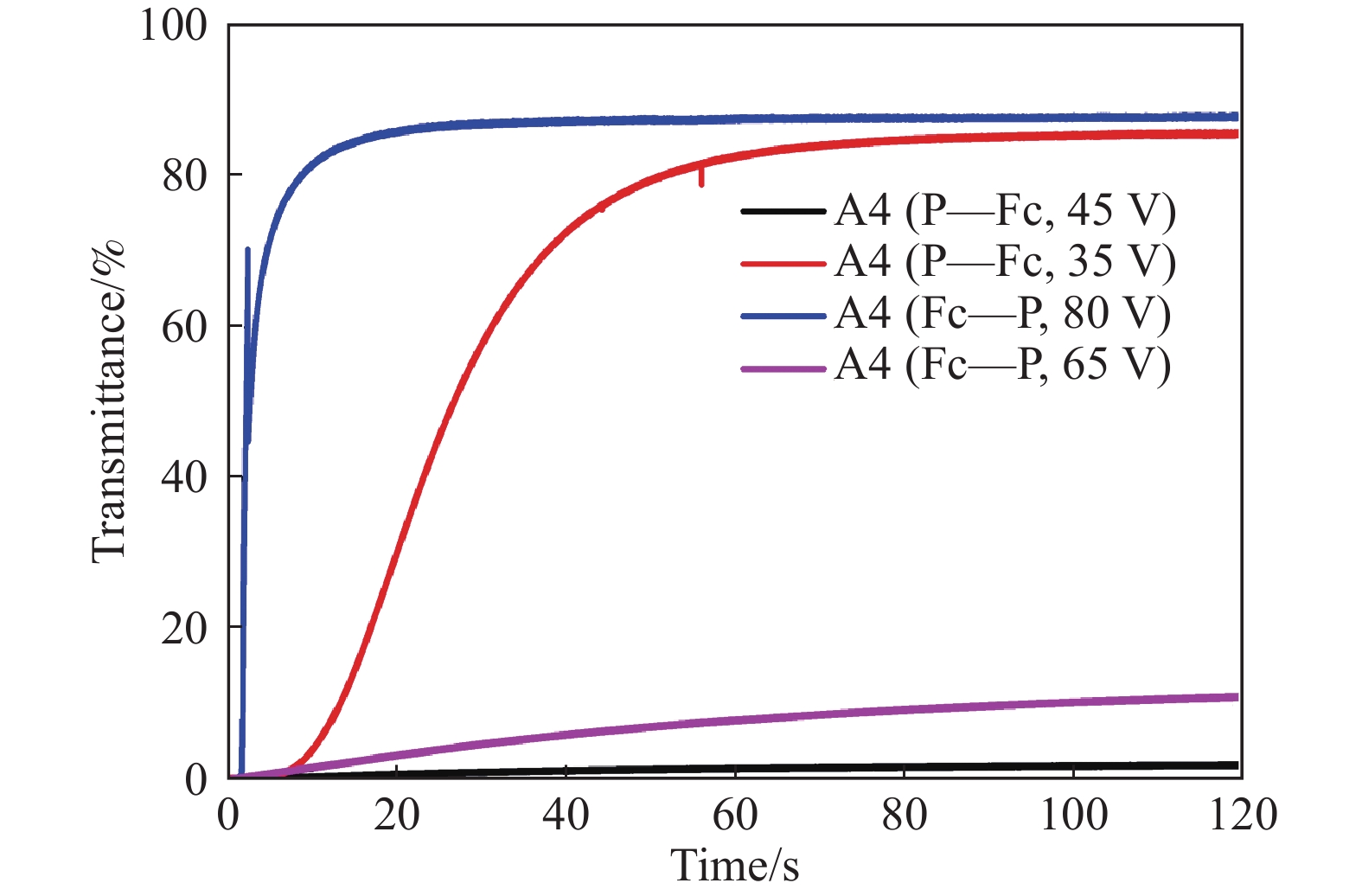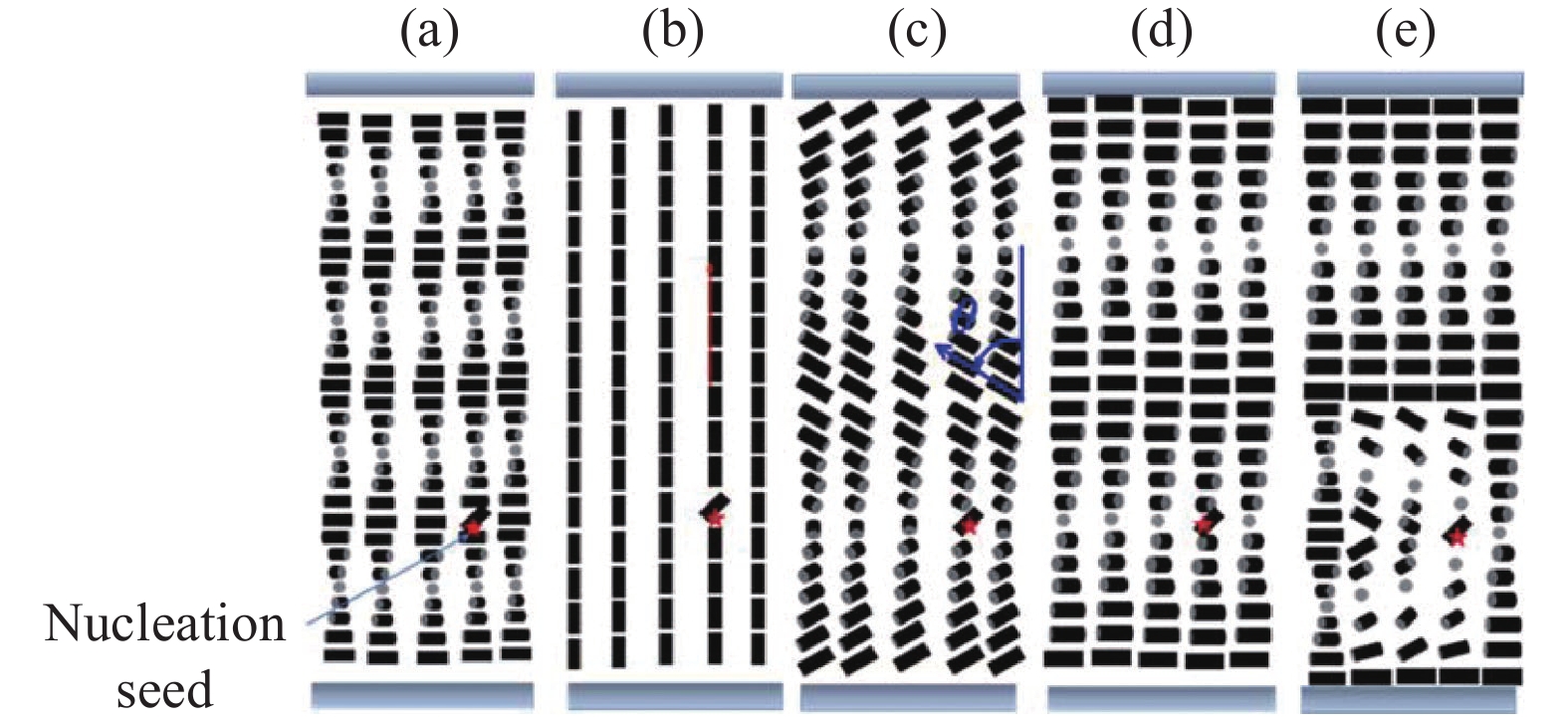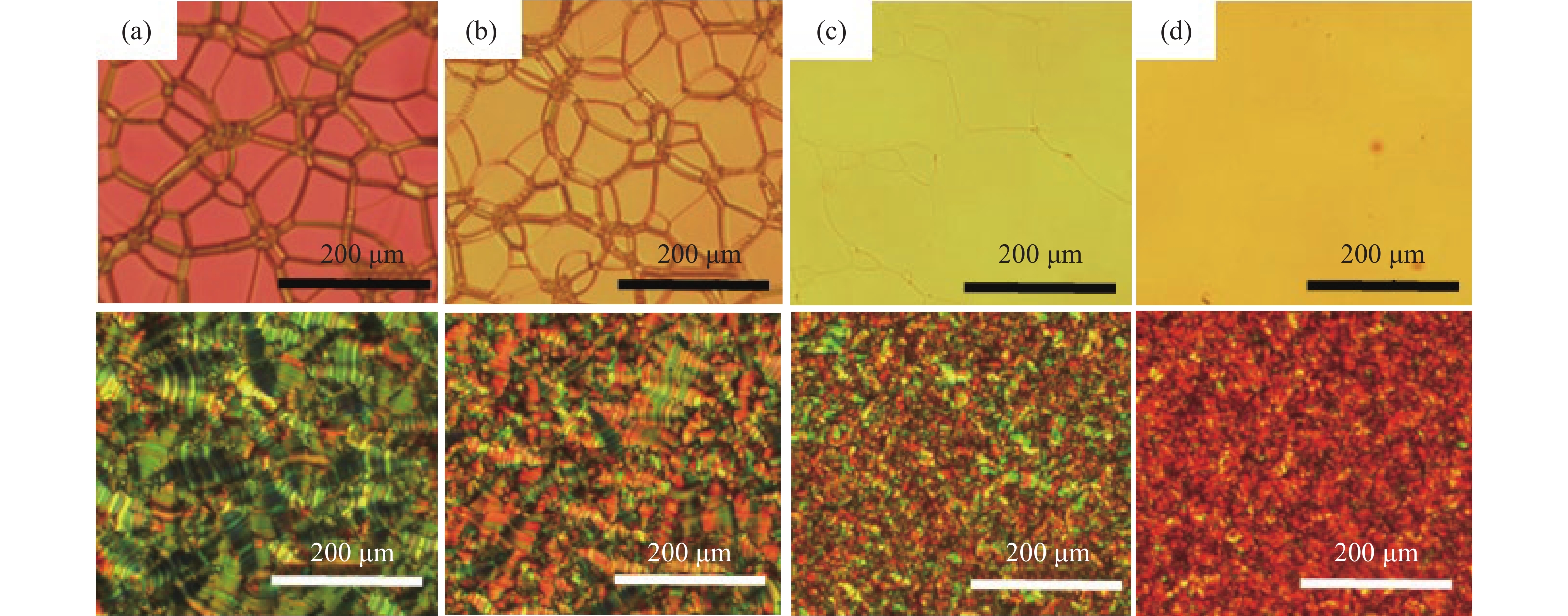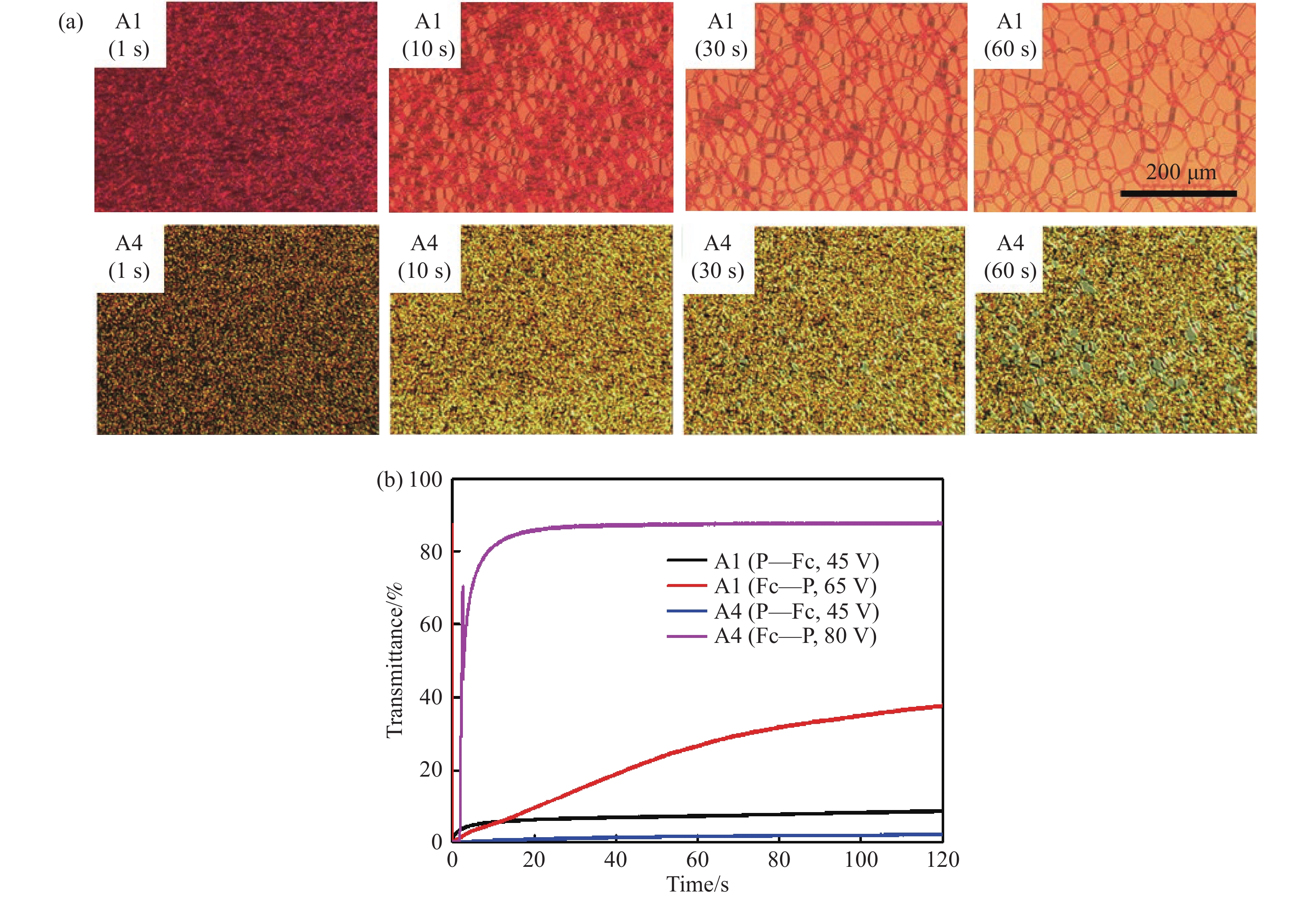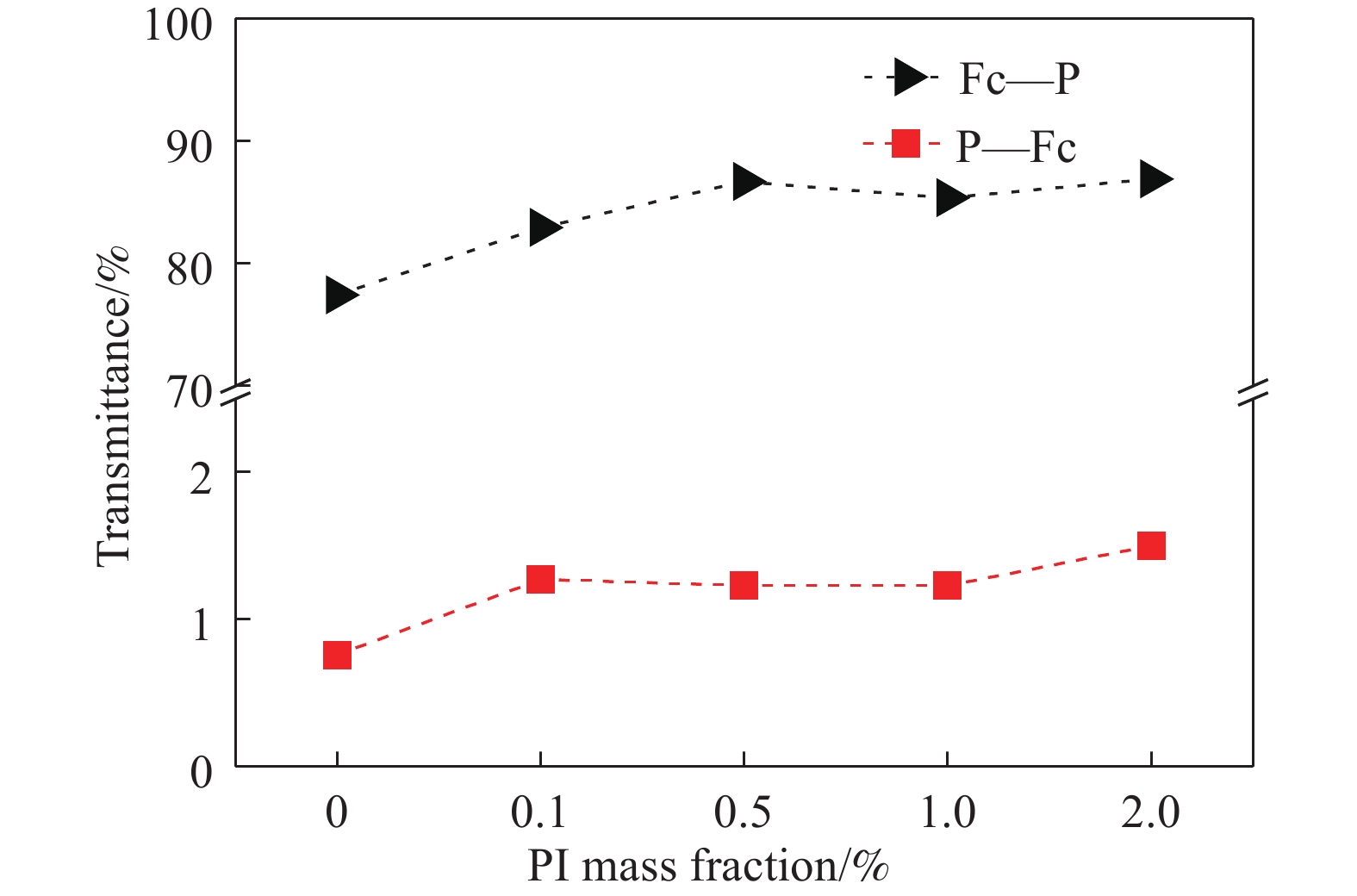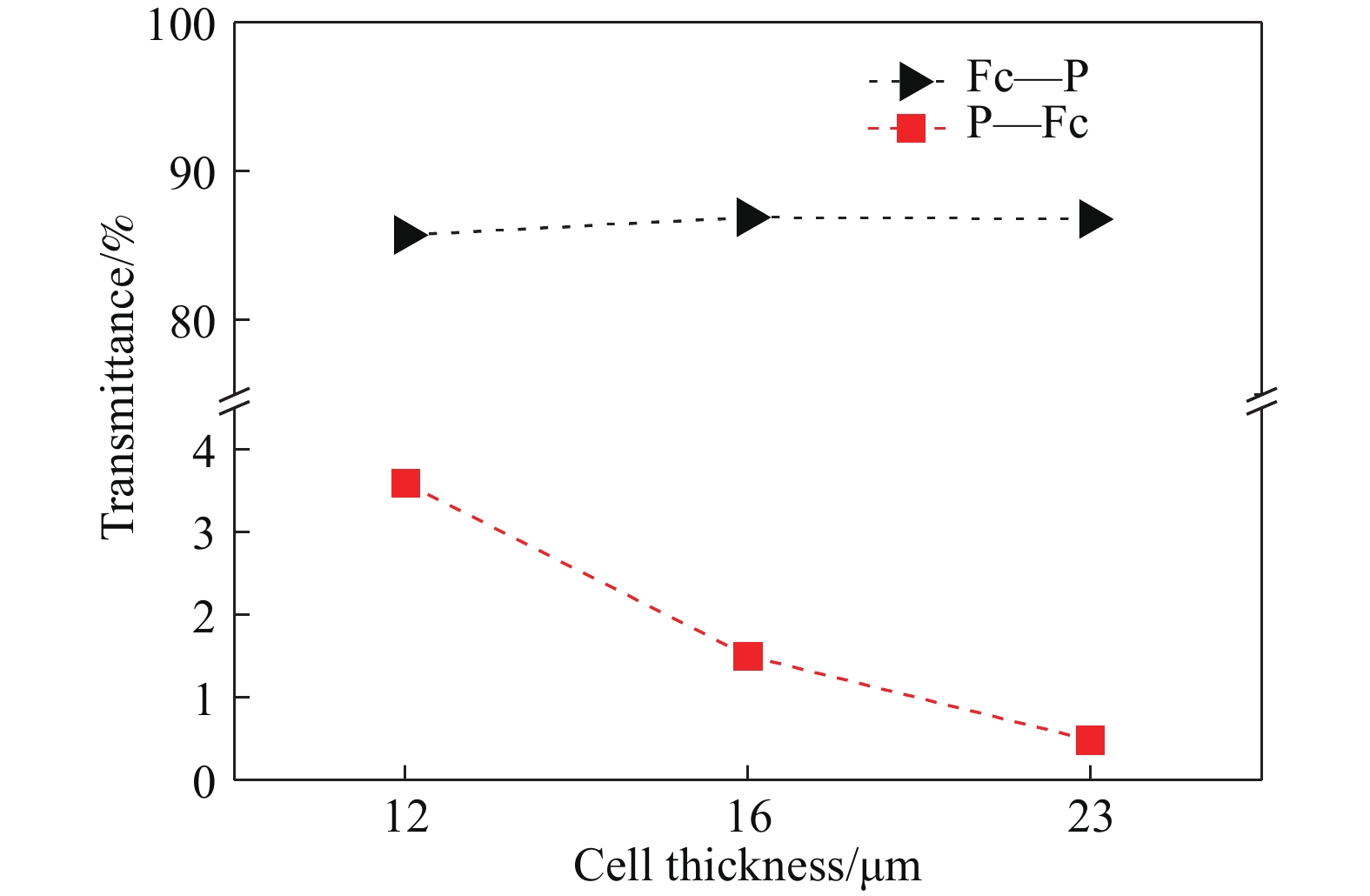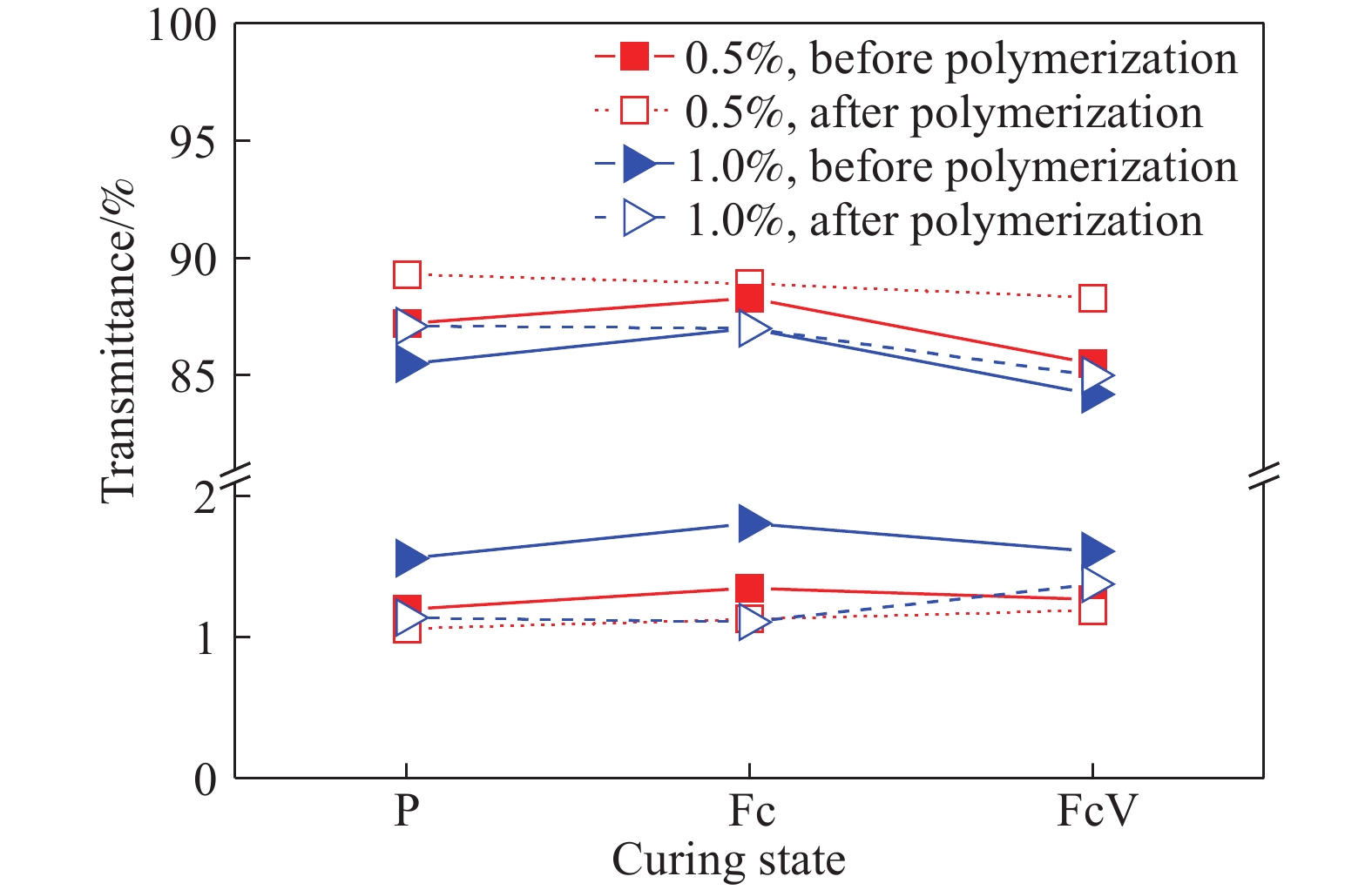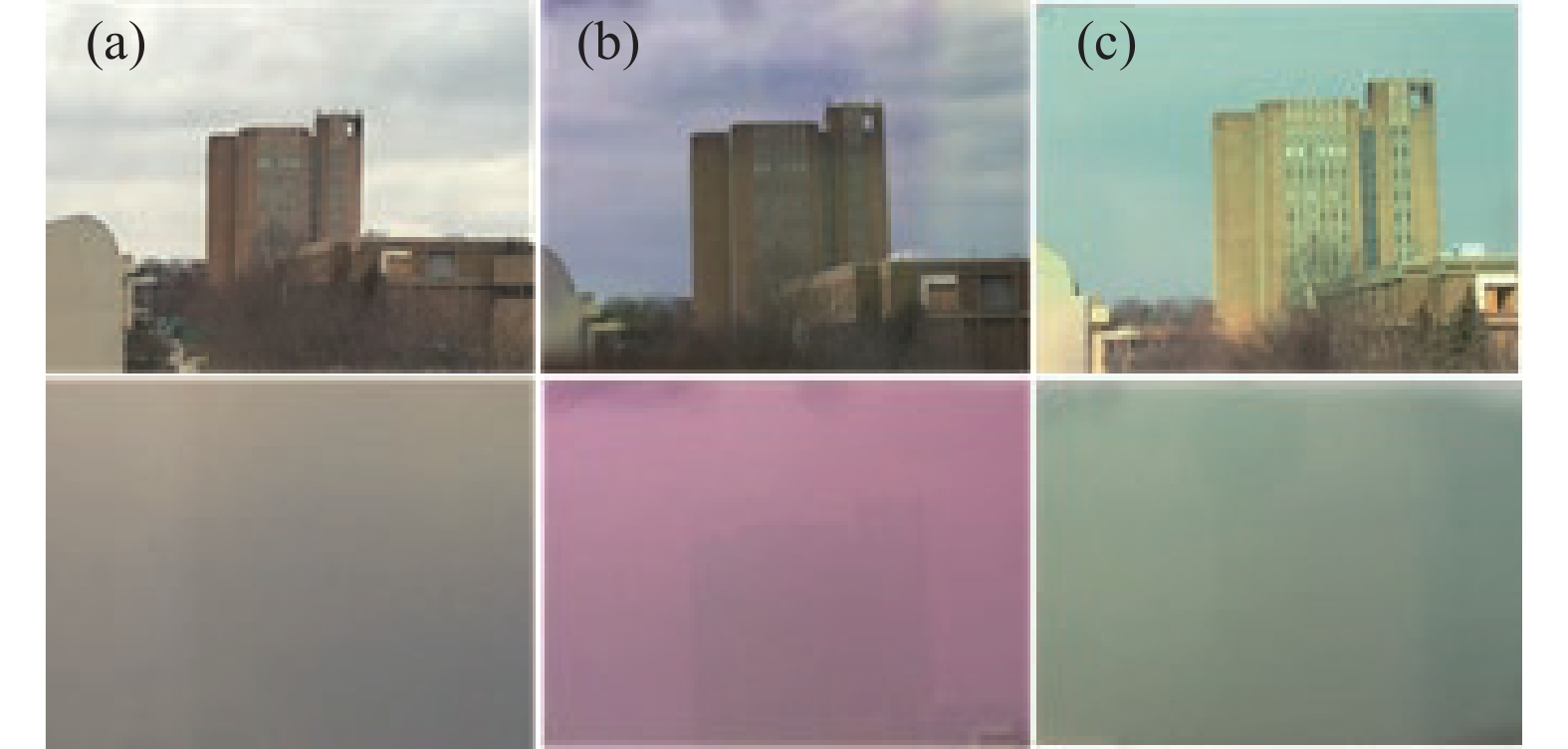Effects of controllable defects on the bistable properties of cholesteric liquid crystal materials and the potential application
-
摘要: 通過彎曲分子的摻雜實現了膽甾相液晶平面態油絲缺陷的調控和焦錐形貌的穩定,研究了各因素對雙穩態穩定性的影響,并展示了雙穩態的潛在應用。偏光顯微鏡觀察和透過率?電壓曲線測試結果表明,彎曲分子的引入可以調控甚至消除平面態的油絲缺陷,實現透過率增加,同時調節焦錐態的形貌,使扇形疇更細小破碎,有利于增強焦錐態的散射和穩定性,實現雙穩態效果。這是因為彎曲分子具有很小的彎曲彈性常數,進而對膽甾相液晶的彎曲彈性常數和扭曲彈性常數相對大小進行調節。平面取向層的錨定越強,對雙穩態(主要是焦錐態)的穩定越不利,但錨定作用太弱,不利于平面態的完美排列。可以通過取向作用強弱調節、盒厚調整來達到較優的效果。少量聚合物的引入有利于實現雙穩態的穩定。最后,基于缺陷調制后的雙穩態特性制備了無色和彩色的調光膜,展示了雙穩態的潛在應用。Abstract: The worldwide energy crisis necessitates the urgent need for energy conservation, especially in buildings whose energy consumption has already surpassed that of transportation and industrial sectors. Most of the energy loss in buildings is related to windows because their heat transfer coefficient is different from other building fabrics. Therefore, smart window technologies are proposed to eliminate energy usage, among which cholesteric liquid crystals show great potential due to their electrically controlled bistable properties. Cholesteric liquid crystals are characterized by two stable states: (1) the planar state that shows selective reflection or high light transmittance and (2) focal conic state that scatters incident light and shows opaque appearance. To realize a bistable state in which both the planar state and the focal conic state could be maintained without an external field is of vital importance for the application, since it could save considerable energy. In this study, oily streak defects and stability of the focal conic state are controlled by introducing a type of bent molecular materials. Effects of various factors on the bistable states are investigated, and the potential applications are explored. Results show that the bent molecule CB7CB could diminish the oily streak defects in the planar state and reduce the domain size of the focal conic state because it has a smaller bent elastic constant. The electro-optical test implies that bistable states are acquired in the composite containing CB7CB. Factors such as the anchoring strength of the alignment layer and cell thickness are then investigated and results reveal that strong anchoring and thinner cell thickness are not favored by the focal conic state. Moreover, bistable states could be stabilized by introducing a small amount of polymer followed by polymerization. Based on the above guidelines, colorless and colorful bistable light shutters are demonstrated, which could maintain both transparent and opaque states without any external electric field. The light shutter saves more energy than the one based on polymer-dispersed liquid crystals. Other potential applications, such as bistable displays and electronic label could also be realized based on the bistable property.
-
圖 3 (a)具有較大伯格斯矢量(b)的位錯分裂為兩個向錯的示意圖[29];(b)在平行且等間距的體系中,具有半圓末端的油絲缺陷層結構示意圖[29];(c)圓環形焦錐疇[29]
Figure 3. (a) Splitting of the core of a large Burgers vector (b) dislocation into two disclinations[29]; (b) an oily streak with a semicircular end in a system of parallel and equidistant layers[29]; (c) toroidal focal conic domain with a circular base smoothly embedded in the set of horizontal flat layers[29]
圖 4 膽甾相液晶解螺旋和螺旋回復過程中的分子排列示意圖[30]。(a)平面態;(b)垂直取向態;(c)錐狀螺旋態;(d)過渡平面態;(e)從過渡平面態到平面態的轉變
Figure 4. Schematic showing the unwinding and restoring of the helical structure in cholesteric liquid crystals[30]: (a) planar state; (b) homeotropic state; (c) conic helical state; (d) transient planar state; (e) transition from the transient planar state to the intrinsic planar state
表 1 樣品組分及質量分數
Table 1. Components and mass fraction of samples
% Sample No. BL038 CB7CB CB15 A1 84 0 16 A2 74 10 16 A3 64 20 16 A4 55.5 28.5 16 表 2 聚合物穩定樣品的透過率測試數據
Table 2. Transmittance result of polymer-stabilized samples
Polymer mass fraction/% Curing state Transmittance before polymerization Transmittance after polymerization TP/% TFC/% CR TP/% TFC/% CR 0.5 P 87.2 1.20 72.7 89.3 1.06 84.2 Fc 88.3 1.35 65.4 88.9 1.13 78.7 FcV 85.5 1.27 67.3 88.3 1.19 74.2 1.0 P 85.5 1.56 54.8 87.1 1.14 76.4 Fc 87.0 1.81 48.1 87 1.11 78.4 FcV 84.2 1.61 52.3 85 1.38 61.6 www.77susu.com<span id="fpn9h"><noframes id="fpn9h"><span id="fpn9h"></span> <span id="fpn9h"><noframes id="fpn9h"> <th id="fpn9h"></th> <strike id="fpn9h"><noframes id="fpn9h"><strike id="fpn9h"></strike> <th id="fpn9h"><noframes id="fpn9h"> <span id="fpn9h"><video id="fpn9h"></video></span> <ruby id="fpn9h"></ruby> <strike id="fpn9h"><noframes id="fpn9h"><span id="fpn9h"></span> -
參考文獻
[1] Abergel T, Delmastro C. Tracking Building 2020 [R/OL]. International Energy Agency (2020-06) [2021-06-30].https://www.iea.org/reports/tracking-buildings-2020 [2] Rezaei S D, Shannigrahi S, Ramakrishna S. A review of conventional, advanced, and smart glazing technologies and materials for improving indoor environment. Sol Energy Mater Sol Cells, 2017, 159: 26 doi: 10.1016/j.solmat.2016.08.026 [3] Hemaida A, Ghosh A, Sundaram S, et al. Evaluation of thermal performance for a smart switchable adaptive polymer dispersed liquid crystal (PDLC) glazing. Sol Energy, 2020, 195: 185 doi: 10.1016/j.solener.2019.11.024 [4] Alghamdi H, Almawgani A H M. Smart and efficient energy saving system using PDLC glass // 2019 Smart City Symposium Prague (SCSP). Prague, 2019: 1 [5] Guo S M, Liang X, Zhang H M, et al. An electrically light-transmittance-controllable film with a low-driving voltage from a coexistent system of polymer-dispersed and polymer-stabilised cholesteric liquid crystals. Liq Cryst, 2018, 45(12): 1854 doi: 10.1080/02678292.2018.1501820 [6] Liang X, Guo C S, Chen M, et al. A roll-to-roll process for multi-responsive soft-matter composite films containing CsxWO3 nanorods for energy-efficient smart window applications. Nanoscale Horiz, 2017, 2(6): 319 doi: 10.1039/C7NH00105C [7] Liang X, Chen M, Chen G, et al. Effects of polymer micro-structures on the thermo-optical properties of a flexible soft-mater film based on liquid crystals/polymer composite. Polymer, 2018, 146: 161 doi: 10.1016/j.polymer.2018.05.044 [8] Zhang H M, Cao H, Chen M, et al. Effects of the fluorinated liquid crystal molecules on the electro-optical properties of polymer dispersed liquid crystal films. Liq Cryst, 2017, 44(14-15): 2301 doi: 10.1080/02678292.2017.1376715 [9] Zhang H M, Zhong T J, Chen M, et al. The physical properties of alkene-terminated liquid crystal molecules/E8 mixture and the electro-optical properties as they doped in polymer-dispersed liquid crystal systems. Liq Cryst, 2018, 45(8): 1118 doi: 10.1080/02678292.2017.1411984 [10] Zhang H M, Chen M, Jiang T M, et al. Cyano terminated tolane compounds for polymer dispersed liquid crystal application: Relationship between cyano terminated tolane based molecular structures and electro-optical properties. Liq Cryst, 2018, 45(12): 1771 doi: 10.1080/02678292.2018.1485975 [11] Manda R, Pagidi S, Kim M, et al. Effect of monomer concentration and functionality on electro-optical properties of polymer-stabilised optically isotropic liquid crystals. Liq Cryst, 2018, 45(5): 736 doi: 10.1080/02678292.2017.1380239 [12] Mouquinho A, Figueirinhas J, Sotomayor J. Digital optical memory devices based on polymer-dispersed liquid crystals films: Appropriate polymer matrix morphology. Liq Cryst, 2020, 47(5): 636 doi: 10.1080/02678292.2019.1667444 [13] Saeed M H, Zhang S F, Zhou L, et al. Effects of rigid structures containing (meth)acrylate monomers and crosslinking agents with different chain length on the morphology and electro-optical properties of polymer-dispersed liquid crystal films. J Mod Opt, 2020, 67(8): 682 doi: 10.1080/09500340.2020.1760386 [14] Lin H N, Zhang S F, Saeed M H, et al. Effects of the methacrylate monomers with different end groups on the morphologies, electro-optical and mechanical properties of polymer dispersed liquid crystals composite films. Liq Cryst, 2021, 48(5): 722 doi: 10.1080/02678292.2020.1815091 [15] Kizhakidathazhath R, Nishikawa H, Okumura Y, et al. High-performance polymer dispersed liquid crystal enabled by uniquely designed acrylate monomer. Polymers, 2020, 12(8): 1625 doi: 10.3390/polym12081625 [16] Gao H Q, Zhang S F, Saeed M H, et al. Study on the morphologies and electro-optical properties of cyano-phenyl-ester liquid crystals/polymer composite films prepared by a stepwise polymerisation. Liq Cryst, 2020, 47(10): 1497 doi: 10.1080/02678292.2020.1737976 [17] Yang J, Zhang Y, Zhang C H, et al. Regulating content of thiol/LC and UV intensity to optimize morphology and electro-optical performance of polymer-dispersed liquid crystal. Liq Cryst, 2018, 45(12): 1726 doi: 10.1080/02678292.2018.1455226 [18] Zhang L, Shi Z Q, He T Y, et al. Effects of the chain length of crosslinking agent and dye-doped amount on the electro-optical properties of polymer-dispersed liquid crystal films prepared by nucleophile-initiated thiol-ene click reaction. Liq Cryst, 2020, 47(1): 42 doi: 10.1080/02678292.2019.1626924 [19] Zhang L, Liu Y W, Shi Z Q, et al. Effects of alkyl chain length of monomer and dye-doped type on the electro-optical properties of polymer-dispersed liquid crystal films prepared by nucleophile-initiated thiol-ene click reaction. Liq Cryst, 2020, 47(5): 658 doi: 10.1080/02678292.2019.1673909 [20] Zhong T J, Mandle R J, Goodby J W, et al. Thiol-ene reaction based polymer dispersed liquid crystal composite films with low driving voltage and high contrast ratio. Liq Cryst, 2020, 47(14-15): 2171 doi: 10.1080/02678292.2018.1563919 [21] Khlifi S, Bigeon J, Amela-Cortes M, et al. Switchable two-dimensional waveguiding abilities of luminescent hybrid nanocomposites for active solar concentrators. ACS Appl Mater Inter, 2020, 12(12): 14400 doi: 10.1021/acsami.9b23055 [22] Chu Y T, Yin Z P, Sha J Q, et al. Regulation and control of polymer network deformation in reverse-mode polymer-stabilised cholesteric texture. Liq Cryst, 2017, 44(4): 688 doi: 10.1080/02678292.2016.1230895 [23] Fuh A Y G, Shin Z B, Yang C H, et al. Electrically controllable smart window with greyscale based on polymer-stabilised cholesteric texture films. Liq Cryst, 2016, 43(12): 1784 doi: 10.1080/02678292.2016.1209700 [24] Lu H B, Chu Y T, Jing S C, et al. Characterisation and effect of polymer network deformation in reverse-mode polymer-stabilised cholesteric texture. Liq Cryst, 2017, 44(3): 437 doi: 10.1080/02678292.2016.1217359 [25] Baliyan V K, Jeong K U, Kang S W. Dichroic-dye-doped short pitch cholesteric liquid crystals for the application of electrically switchable smart windows. Dyes Pigments, 2019, 166: 403 doi: 10.1016/j.dyepig.2019.03.045 [26] Li C C, Tseng H Y, Chen C W, et al. Versatile energy-saving smart glass based on tristable cholesteric liquid crystals. ACS Appl Energy Mater, 2020, 3(8): 7601 doi: 10.1021/acsaem.0c01033 [27] Rumi M, Bunning T J, White T J. Polymer stabilization of cholesteric liquid crystals in the oblique helicoidal state. Soft Matter, 2018, 14(44): 8883 doi: 10.1039/C8SM01278D [28] Oswald P, Colombier J. On the measurement of the bend elastic constant in nematic liquid crystals close to the nematic-to-SmA and the nematic-to-NTB phase transitions. Liq Cryst, 2021: 1 [29] Kitzerow H S, Bahr C. Chirality in Liquid Crystals. New York: Springer-Verlag, 2001 [30] Yu M N, Zhou X C, Jiang J H, et al. Matched elastic constants for a perfect helical planar state and a fast switching time in chiral nematic liquid crystals. Soft Matter, 2016, 12(19): 4483 doi: 10.1039/C6SM00546B [31] Wang L, He W L, Wang Q, et al. Polymer-stabilized nanoparticle-enriched blue phase liquid crystals. J Mater Chem C, 2013, 1(40): 6526 doi: 10.1039/c3tc31253d [32] Li J T, Bisoyi H K, Tian J J, et al. Optically rewritable transparent liquid crystal displays enabled by light-driven chiral fluorescent molecular switches. Adv Mater, 2019, 31(10): 1807751 doi: 10.1002/adma.201807751 [33] Wang J Q, Meng C L, Wang C T, et al. A fully self-powered, ultra-stable cholesteric smart window triggered by instantaneous mechanical stimuli. Nano Energy, 2021, 85: 105976 doi: 10.1016/j.nanoen.2021.105976 -




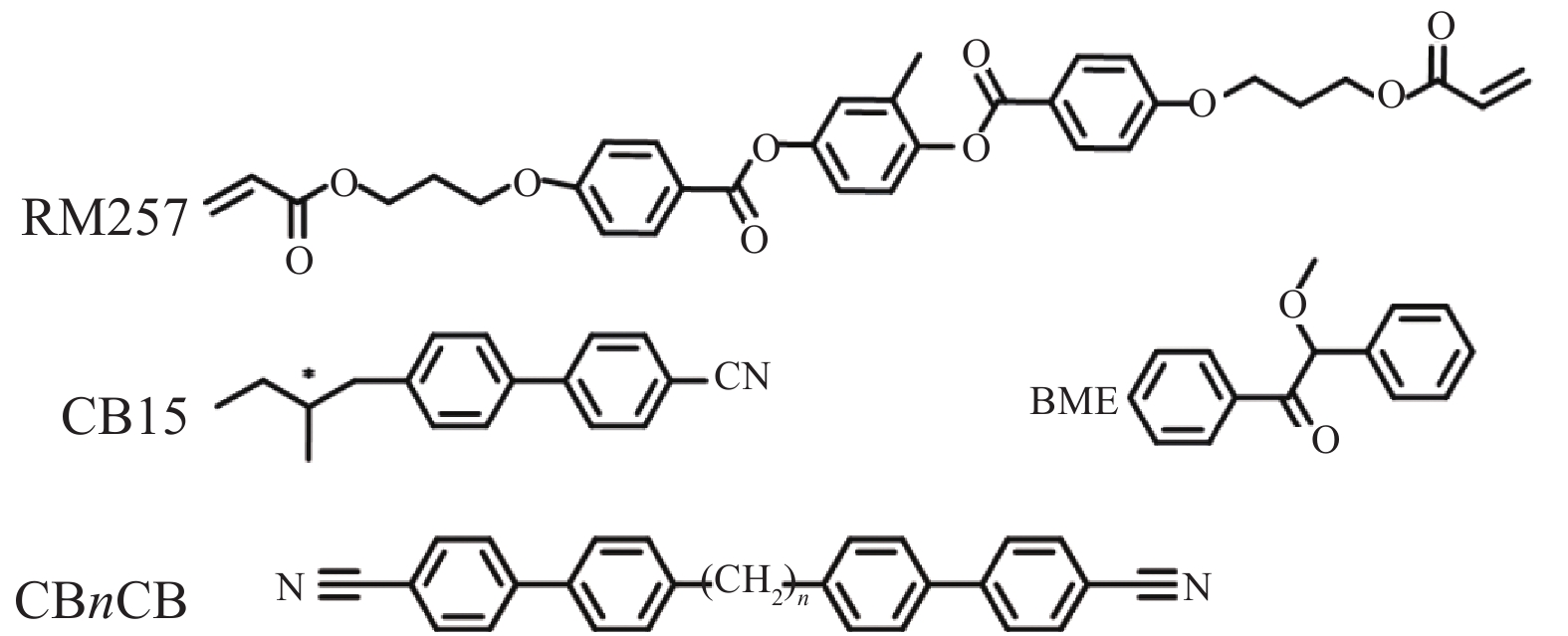
 下載:
下載:
